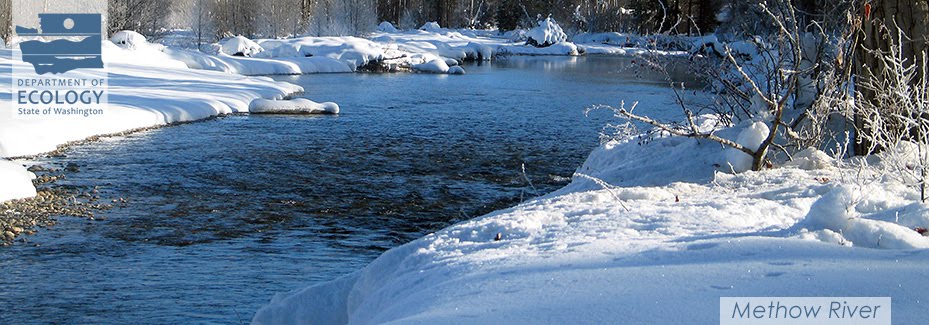Back in 2015, Ecology released a set of recommendations to address the toxic chemicals known as polychlorinated biphenyls, or PCBs. Over the past several months, we reviewed those recommendations, and found that Washington is making slow progress toward getting PCBs out of the environment.
Some caveats: Getting rid of PCBs in many cases requires conducting a comprehensive survey of, for instance, every light fixture in a building, or testing caulk and paint on the outside of a building. Understandably, this makes it difficult for organizations to be completely confident they’ve truly examined every inch of a building. And it means that we lack information about a lot of buildings and equipment that have not received that level of scrutiny.
Given that PCBs were banned more than 40 years ago, you might wonder why it’s taken so long to actually get rid of them. The answer speaks both to why PCBs were so widely used and why they’re such a toxic threat. Simply put, these chemicals are just really, really persistent – they stick around forever and don’t break down.
Back in the mid-20th century, that was considered a benefit, not a problem. Adding PCBs to your paint or caulk or using them in electrical transformers promised long-lasting performance. Of course, we eventually figured out that using highly toxic chemicals in all sorts of common products was not a recipe for a healthy environment.
PCBs can cause cancer and other health effects, and they tend to build up in the food chain, increasing the impacts on apex predators like orca whales – and people. Because of this, and because of their longevity, PCBs are a concern even at extraordinarily low concentrations. The U.S. Environmental Protection Agency’s water quality standard for PCBs in Washington is 7 parts per quadrillion. A quadrillion is a 1 followed by 15 zeros. It’s a hard number to even wrap your mind around – it’s been compared to picking up one grain of sand from an entire beach.
Tackling toxics
 To tackle this problem, Ecology and the Washington State Department of Health developed a chemical action plan for PCBs, with input from industry, environmental groups and other organizations. After more than a year of study, the agencies released the 2015 recommendations.
To tackle this problem, Ecology and the Washington State Department of Health developed a chemical action plan for PCBs, with input from industry, environmental groups and other organizations. After more than a year of study, the agencies released the 2015 recommendations.Several of the recommendations were straightforward, such as looking in schools and public buildings to check whether any of the fluorescent light fixtures in these facilities were decades-old leftovers that still used PCBs in their transformers. Some of the recommendations were much more challenging, such as addressing the minute quantities of PCBs still being created as byproducts of common manufacturing methods – such as making certain pigments and dyes.
School lights remain an ongoing concern and spotlight the difficulty of documenting PCB eradication. While we believe Washington schools have gotten most of them out, there have been documented instances of PCB-leaking fluorescent light ballasts.
Safer chemistry begins at home
These same ballasts may linger in out-of-the-way closets or basements in our homes, in our garages or in public buildings. Now is a good time to check! The Environmental Protection Agency provides tips to help identify ballasts that may contain PCBs:- Ballasts manufactured before July 1, 1979 may contain PCBs
- Ballasts manufactured between July 1, 1979, and July 1, 1998, that do not contain PCBs must be labeled "No PCBs"
- If a ballast is not labeled "No PCBs," it is best to assume it contains PCBs unless it is known to be manufactured after 1979
- Ballasts manufactured after 1998 are not required to be labeled
Slow progress
All of this is not to say that we haven’t been making progress: The Department of Health offered workshops for school districts on the risk these obsolete light fixtures represented, and the Washington Department of Commerce included replacing these lights as a preferred use for its energy efficiency grants. Many other school districts had already replaced their 40-plus-year-old light fixtures with newer, more energy efficient models.Large electrical transformers – the kind you find on a electrical pole or at a substation – also used to use PCB-containing oil. Avista, the utility that serves much of eastern Washington, reports that it has tracked down and removed all of these transformers. Seattle City Light says that it has removed more than 7 million pounds of PCB-containing electrical equipment, and that it continues to hunt down any that remain. Ecology is still assessing what progress other utilities in the state are making.
Getting at the byproduct PCBs that continue to be produced in pigments and other materials is a trickier project, but progress is being made there as well. Ecology has conducted two studies testing common consumer products for PCB byproducts.The bad news is that we found very low levels of PCBs – in the parts per billion range – in a wide range of products. Not all similar products contained PCBs, however, so it may be possible to improve manufacturing processes to avoid creating these byproducts.
Ecology and the Washington Department of Enterprise Services are developing new state purchasing guidelines to help the state buy products without PCB byproducts, as directed by a 2014 state law.
There’s still a lot of work to be done on PCBs – including doing more monitoring to look at PCB levels in the environment, and biomonitoring to study PCB levels in people. It’s likely to be a long, long time before we no longer have to worry about this toxic legacy. Knowing that we are making progress, however, should give us hope that we can get there.
Learn more:
By Andrew Wineke, Hazardous Waste and Toxics Reduction



No comments:
Post a Comment